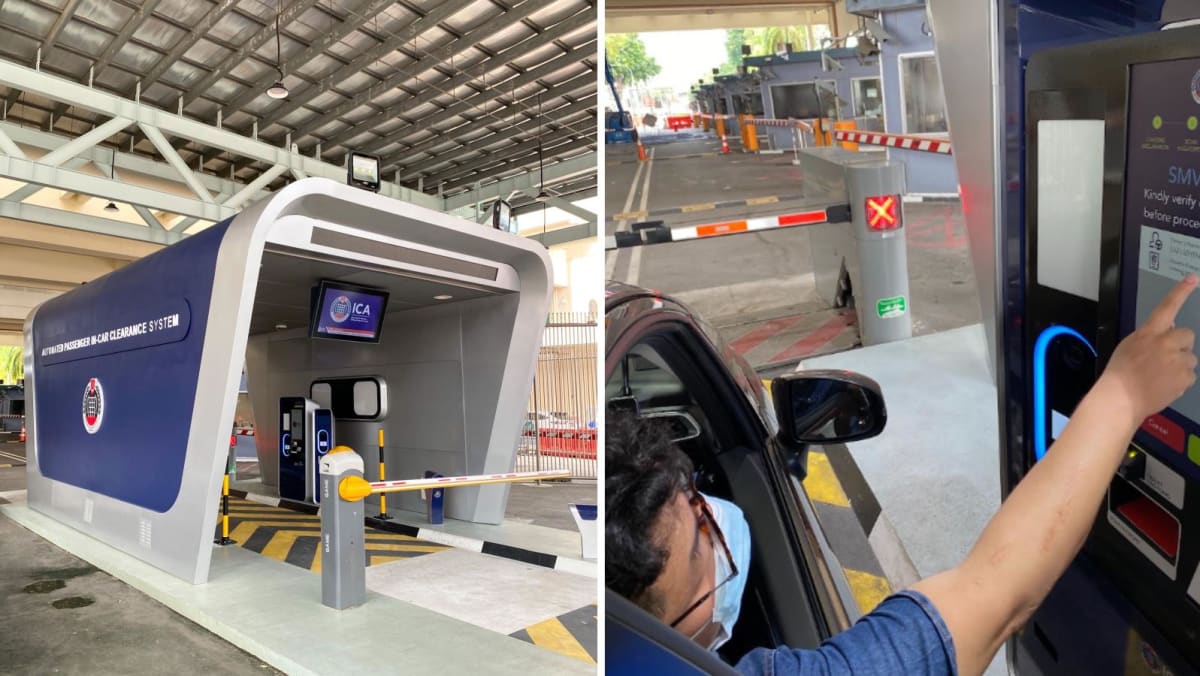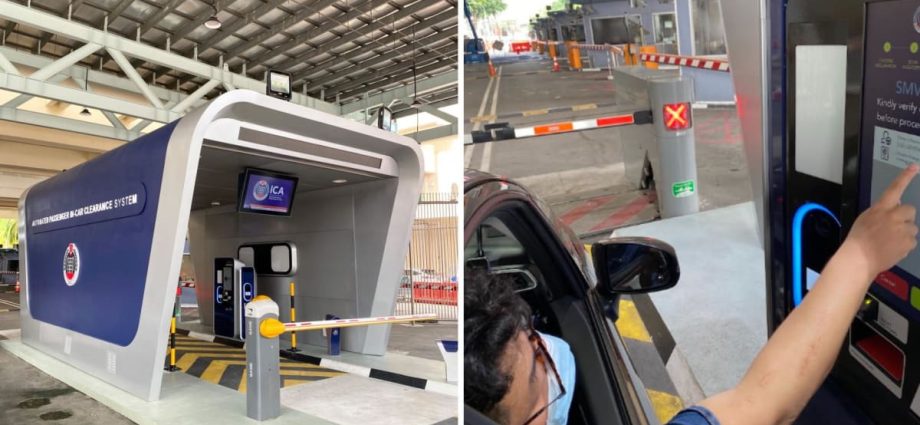
The officer will then conduct “facial image checks” of the passengers in the car using data retrieved through the QR code.
“This will allow group clearances to be completed much more quickly and reduce the overall time taken to clear immigration,” said ICA.
Travellers will be able to save the profile that they have created and use it for future trips, without having to key in their details again.
“Family members travelling together, for example, will not need to regenerate the information for subsequent trips, unless there are updates to their passport details,” said ICA.
When dedicated APICS lanes are subsequently rolled out at Tuas and Woodlands checkpoints, travellers will still scan the QR code generated by the MyICA app themselves.
They will then present their biometrics for identity verification through APICS’ contactless biometric scanners.
“This will remove the need to station an officer at every car lane, allowing us to open more lanes,” said ICA.
Trials of APICS started last year at Woodlands Checkpoint. About 94 per cent of travellers were able to clear immigration through APICS without assistance from officers.
“The majority found the process to be intuitive and faster compared to manual clearance,” said ICA.
The agency added that it would work with HTX to further improve the concept of operations for APICS before its roll-out at all land checkpoints.

